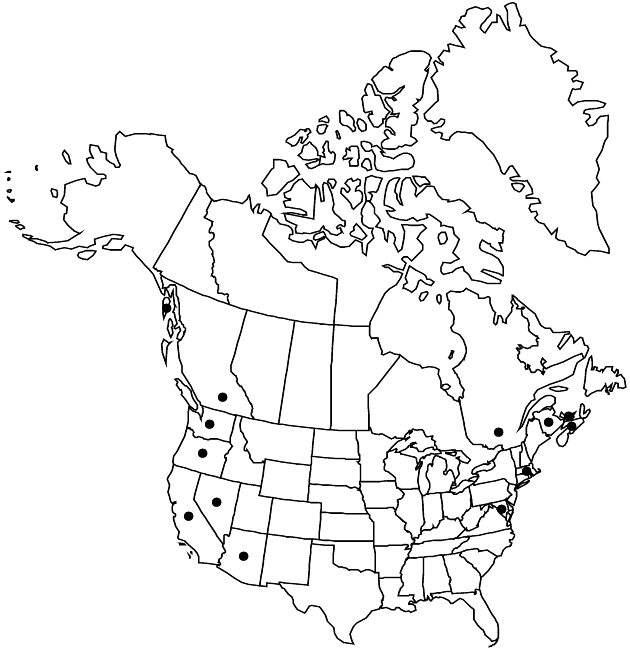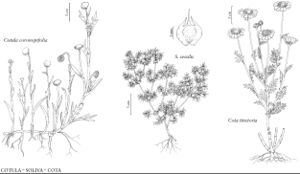Cotula coronopifolia
Sp. Pl. 2: 892. 1753.
Perennials, (3–)5–15(–25+) cm tall or across. Stems prostrate (rooting at nodes, ± fleshy) to decumbent or erect, glabrous. Leaves sessile (bases sheathing stems); blades linear to lanceolate or oblong (sometimes lobed, lobes lanceolate to linear), (1–)2–3(–7) cm, ultimate margins entire or irregularly toothed or lobed, faces gland-dotted. Involucres 6–9(–12+) mm diam. Phyllaries 21–30+ in 2–3+ series. Ray florets 0 (peripheral pistillate florets 12–40+ in 1 series; corollas 0). Disc corollas yellow, 1–1.5 mm. Cypselae: outer 1.2–1.8 mm, winged, adaxial faces papillate; inner 0.7–1 mm, scarcely, if at all, winged, not papillate. 2n = 20.
Phenology: Flowering Mar–Dec.
Habitat: Saline and freshwater marshes, along streams
Elevation: 0–900 m
Distribution

Introduced; Presumed B.C., N.B., N.S., P.E.I., Que., Alaska, Ariz., Calif., Md., Mass., Nev., Oreg., Wash., S Africa, Australia, also introduced in Mexico (Baja California), South America, Europe.
Discussion
Selected References
None.
